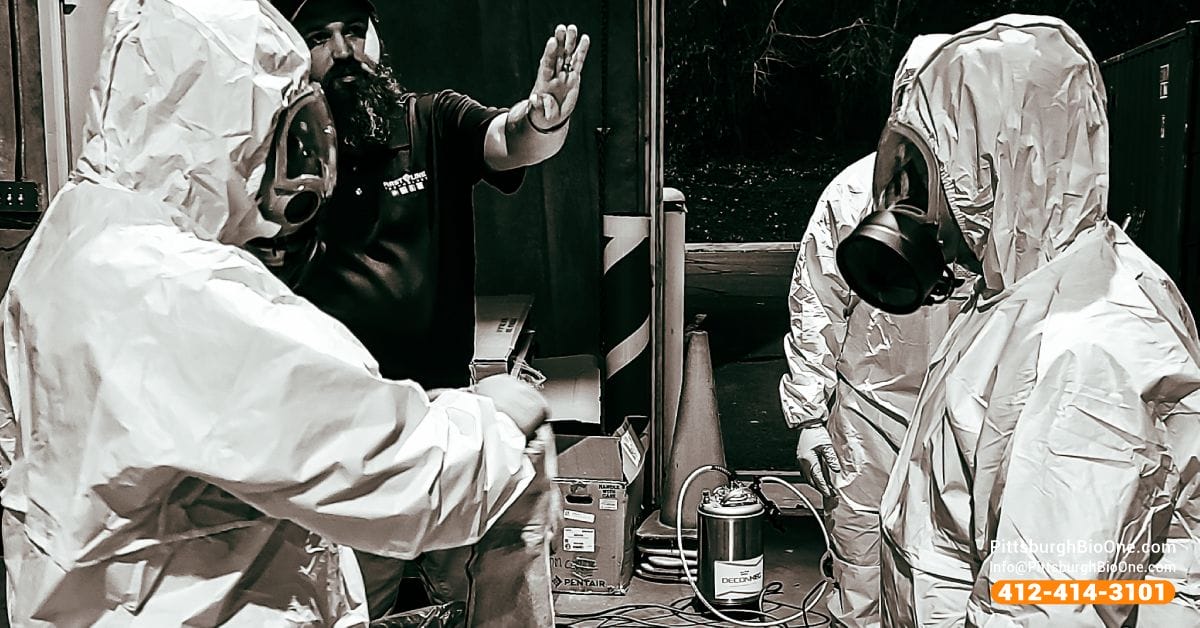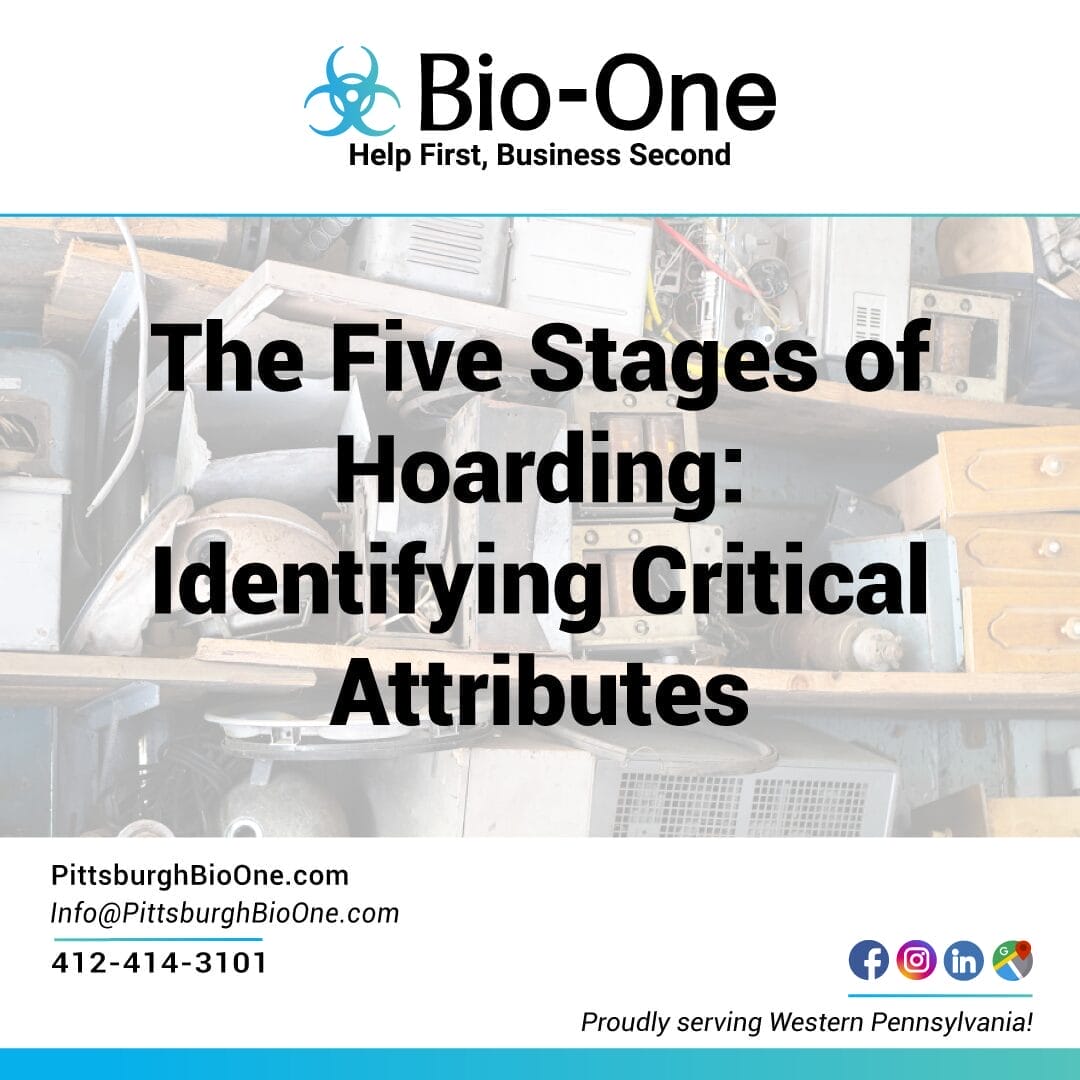
Hoarding, a mental health condition often stigmatized but little understood, is a gradual process that can significantly impact a person's life, their family, and potentially the entire community. In this comprehensive guide, we break down the five stages of hoarding, shedding light on critical attributes in each phase and offering strategies for intervention and support.
Whether you're a homeowner trying to prevent hoarding tendencies, a professional addressing hoarding with a client, or a concerned loved one, understanding these stages is the first step to tackling this challenging issue!
For many, hoarding brings to mind the reality television shows that raise awareness about this enigmatic disorder. But hoarding goes beyond what's portrayed on screen; it's a behavioral pattern that begins subtly and can evolve into a crippling situation. At the heart of hoarding is the difficulty in parting with possessions, often driven by an attachment that others might find irrational or inexplicable. Hoarders don't simply have cluttered homes — they experience a deep emotional conflict when faced with the prospect of discarding items.
Take a look at the five stages of hoarding. We hope this information serves as a roadmap for understanding and addressing hoarding behaviors in someone you know or care about.
The first stage of hoarding usually starts with a seemingly harmless habit: acquiring items. This behavior isn't problematic in and of itself, but for individuals with hoarding tendencies, it can quickly become an obsession. Compulsive buying or acquisition is often a source of comfort, control, or even excitement for hoarders. Whether it's through shopping, collecting free items, or inheriting possessions, these actions serve a psychological need, providing temporary relief from anxiety, loneliness, or other underlying issues.

Acquired items lead to the second stage: clutter. The transition from acquisition to clutter is gradual and not often recognized until living spaces become difficult to use for their intended purpose. The accumulation of possessions encroaches on daily living, often spilling into hallways, living rooms, kitchens, and other communal areas. At this stage, organizing these items becomes a herculean task, and their sheer presence can become overwhelming.
Clutter can lead to increased stress and anxiety, as well as a sense of helplessness in those trying to live amongst it. For individuals with hoarding tendencies, every item has a perceived value or use, making decisions about what to keep and what to discard increasingly difficult. The presence of clutter also hampers basic household functions such as cooking, cleaning, and personal hygiene.
The third stage of hoarding sees a significant increase in the accumulation of items. At this point, the compulsion to acquire is fueled by the inability to sort through or discard anything, resulting in an overabundance of possessions. The living areas become fully engulfed, and every available nook and cranny is filled, often to the point of structural unsoundness.
Individuals at this stage often cite the 'just in case' rationale for keeping items. The fear that they might need something they've thrown away is almost paralyzing, so they feel compelled to keep everything. This behavior is reinforced by the perceived value and utility of the items, which further justifies their retention.

At this point, professional organizers and psychologists specializing in Hoarding Disorder can provide the necessary support. Cognitive-behavioral therapy (CBT), with a focus on exposure and response prevention, can help hoarders challenge and change their thought patterns and compulsions before the situation becomes even more overwhelming.
In the fourth stage, the hoarding behavior begins to have a noticeable impact on the person's ability to function in their daily life. The clutter and excessive accumulation make it almost impossible to lead a typical existence within their home. Basic activities such as bathing, cooking, using the bathroom, and even sleeping can become challenging or impossible.
The decline in functionality is often accompanied by a breakdown in personal hygiene. Hoarders living in unsanitary conditions can face an increased risk of illness and infestation, as clutter becomes a harbinger for pests and bacteria. Health professionals may need to become involved to address any possible physical health issues related to living in such environments.
Functional impairment can be linked to other mental health challenges, such as depression, anxiety, and other mood disorders. For many hoarders, their living conditions become a visible manifestation of their inner turmoil and a barrier to receiving essential care and support.
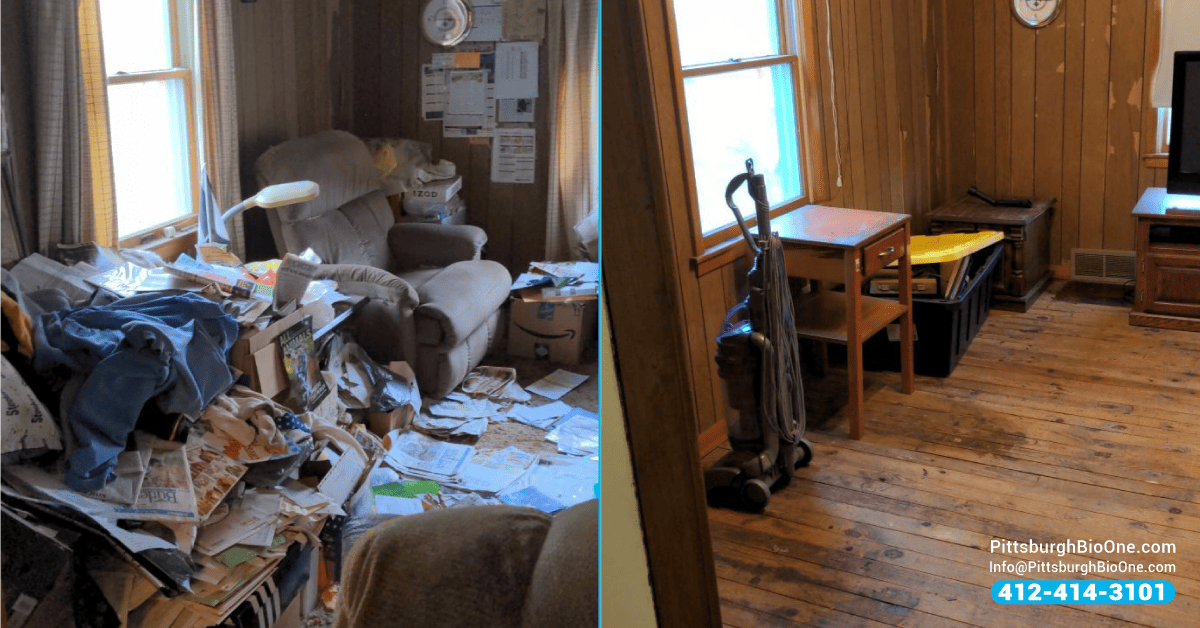
This is the convergence of all the previous stages of hoarding, culminating in a setting that poses not just psychological and social risks, but grave health and safety risks as well. By this point, the living environment is likely to be so hazardous that it can result in accidents, fires, and even death.
Common health risks at this stage include respiratory issues from living in clutter that prevents proper air circulation, as well as the spread of infectious diseases due to poor sanitation. Structural issues in the home can also pose dangers, and the hoarder's ability to receive emergency assistance can be severely compromised.
Hoarders in this stage might face legal consequences, especially if their home becomes a matter of public health. Their personal and social networks are often stretched to the breaking point, and the individual may become increasingly isolated as their situation deteriorates.

Understanding the stages of hoarding is vital for anyone affected by this condition. From individuals to family members, mental health professionals, and community services, a collective and informed approach can support those struggling with hoarding to reclaim their lives. Remember, the road to recovery is often long and filled with challenges, but help is available.
At Bio-One of Pittsburgh, we specialize in the cleaning and restoration of hoarder houses, working with compassion and discretion to ensure a safe and habitable home for those affected. Call our specialists and get started with help for any of the previously described stages of hoarding! It's never too soon to ask for help.
Bio-One of Pittsburgh is always ready to assist you in unexpected situations. Our expert specialists are always ready to assist you in dealing with highly pressurized situations that may be emotionally and physically draining, allowing you to focus on other vital activities while healing in a sanitary environment. Locally owned and operated, we provide the following:
Bio-One works closely with victim support centers nationwide and local authorities, communities, emergency services personnel, hoarding task forces, apartment communities, insurance companies, and other organizations to accomplish each customer's most efficient and superior service possible.
Many crime scene cleanup companies may face unexpected, unfortunate life events. Still, Bio-One is the right choice because of our expertise and profoundly caring and discreet specialists.
We are proud members of the NAPO Pittsburgh - National Association of Productivity & Organizing Professionals!
Bio-One of Pittsburgh serves the following Pennsylvania counties: Allegheny County, Washington County, Beaver County, Butler County, Armstrong County, Westmoreland County, Lawrence County, Greene County, Fayette County, and Mercer County.
We also serve the following cities and surrounding communities: from Allison Park all the way to Creighton, Crescent, Cuddy Curtisville, Millvale, Monroeville, Oakmont, Pitcairn, Pleasant Hills, Plum, Port Vue, Presto, Rankin, Rennerdale, Rural Ridge, Russellton, Sharpsburg, South Park to Springdale, we are ready to help you.

When you've finally ridden your space of those unwelcome guests, there's still work to be done. Post-pest control cleaning is perhaps the most crucial step in the entire pest management process, providing a clean, safe, and nuisance-free environment to get back to your daily life.
This comprehensive guide is tailored to help homeowners and property managers tackle the task of cleaning up after pest control services thoroughly. By following this checklist, you'll ensure that you not only remove pest remnants but also prevent future infestations and safeguard your property against potential health hazards.
Why is cleaning after pest control essential? While the pest control treatment may have effectively eliminated the pests, there are copious reasons to ensure a thorough cleaning afterward:
Before breaking out the cleaning supplies, there are a few steps you should take to prepare the affected area:
Remove Belongings
If possible, remove any personal items from the treated area. Clothes, toys, or any other items that aren't secure in closed containers should be taken out. This not only protects your things from any lingering pesticide but also gives pests fewer hiding spots.
Ventilate the Area
Open all windows and doors to allow fresh air to circulate and any residual pesticide to dissipate. If weather permits, keep the space ventilated for a few days. Proper ventilation can significantly reduce the pesticide's toxicity in the air and on surfaces.
Use Protective Gear
Although the area might look safe, some pesticides can still be present. Wear gloves, a mask, and, if required by the pesticide's instructions, eye protection.
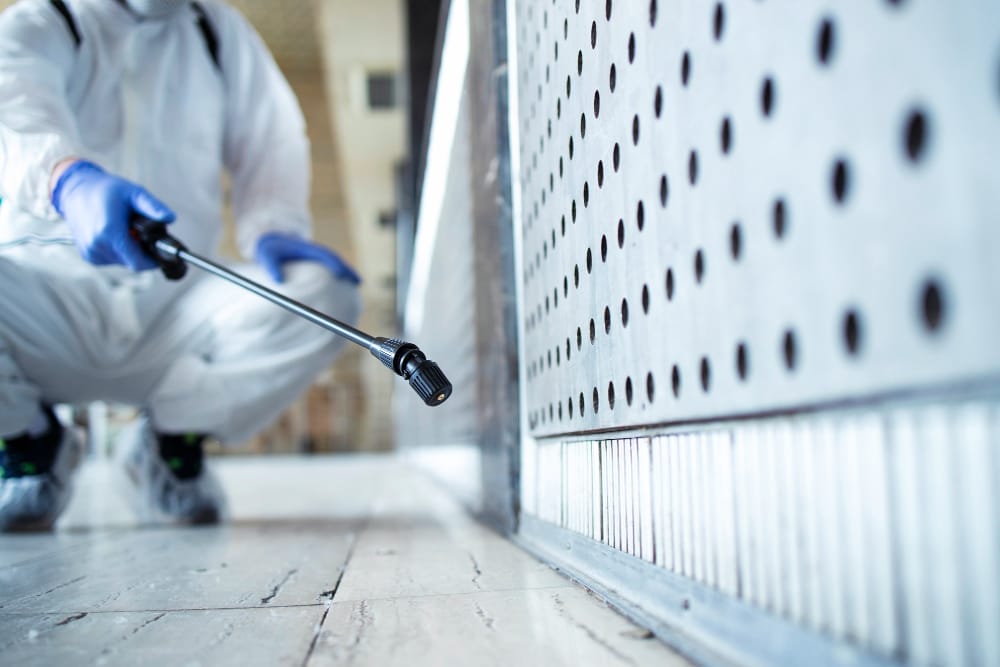
Here's a simple guide to get you started:
Spray the floors and areas with a strong, EPA-approved disinfectant, and hot water. This will help remove any pesticide residues and eliminate odors that could attract pests back into your home.
Pay special attention to countertops, shelves, and other surfaces where food is stored or prepared. Use a disinfectant to kill any bacteria or pathogens that pests may have left behind.
Wash all fabrics, including curtains, linens, and clothes that were in the treated area. Use the hottest water temperature possible, and add an extra rinse cycle to ensure that all pesticides are removed.
Inspect the area for any cracks or openings that pests could use to enter. Seal these with caulk or steel wool to prevent a new infestation.
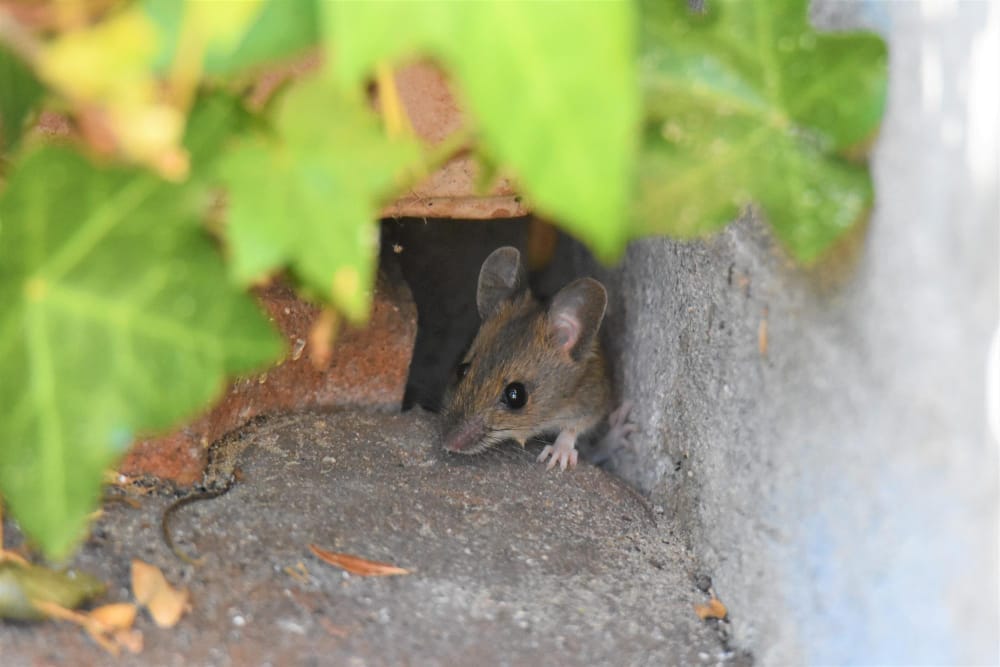
Cleaning after pest control is not a one-time event. Regular maintenance is essential to keep pests at bay:
Regular Inspections
Conduct regular inspections of your home or building to catch pest problems early. Look for signs such as droppings, gnaw marks, or strange odors.
Proper Waste Disposal
Dispose of garbage regularly, and always use sealable trash cans. This minimizes potential food sources for pests.
Maintain Cleanliness
Keep your space tidy and clean. Wipe down surfaces, store food in airtight containers, and promptly fix any leaks or spills.
While professional treatments do their part, cleaning up after them is crucial to fully completing the restoration process. In places where the pest scenario is more intense, such as severe rodent infestations, you may need specialized cleaning services to address the contaminated areas thoroughly.
For those in the Pittsburgh and Western Pennsylvania area seeking professional help, Bio-One offers rodent dropping cleanup services and post-pest control cleaning. Our expert team handles the most challenging biohazard cleanups.
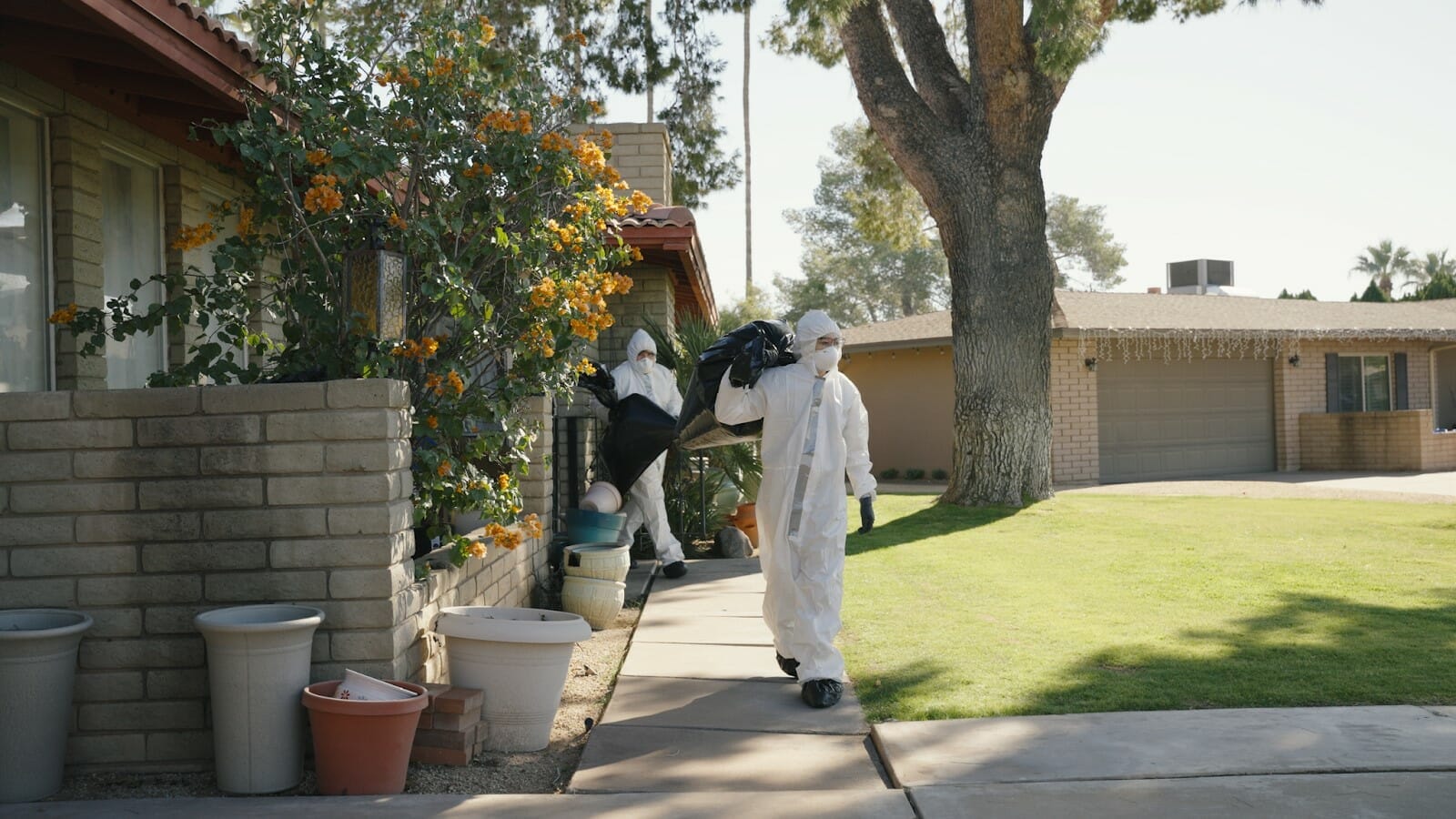
By following this ultimate cleaning checklist, you'll be creating a barrier to repel pests and a healthy oasis for you and your family. If you need help, we're only a call away!
Bio-One of Pittsburgh is always ready to assist you in unexpected situations. Our expert specialists are always ready to assist you in dealing with highly pressurized situations that may be emotionally and physically draining, allowing you to focus on other vital activities while healing in a sanitary environment. Locally owned and operated, we provide the following:
Bio-One works closely with victim support centers nationwide and local authorities, communities, emergency services personnel, hoarding task forces, apartment communities, insurance companies, and other organizations to accomplish each customer's most efficient and superior service possible.
Many crime scene cleanup companies may face unexpected, unfortunate life events. Still, Bio-One is the right choice because of our expertise and profoundly caring and discreet specialists.
We are proud members of the NAPO Pittsburgh - National Association of Productivity & Organizing Professionals!
Bio-One of Pittsburgh serves the following Pennsylvania counties: Allegheny County, Washington County, Beaver County, Butler County, Armstrong County, Westmoreland County, Lawrence County, Greene County, Fayette County, and Mercer County.
We also serve the following cities and surrounding communities: from Allison Park all the way to Creighton, Crescent, Cuddy Curtisville, Millvale, Monroeville, Oakmont, Pitcairn, Pleasant Hills, Plum, Port Vue, Presto, Rankin, Rennerdale, Rural Ridge, Russellton, Sharpsburg, South Park to Springdale, we are ready to help you.

Have you ever wondered: "How common is animal hoarding?" Well, you should know that it is widely recognized as a complex mental health disorder. It involves an individual amassing large amounts of animals, unable to provide proper care and living conditions due to the sheer volume of creatures in their home or property. Often, hoarders believe they are helping the animals when in reality, they are causing immense suffering.
There are specific criteria that need to be met to define a situation as animal hoarding. Most notable among these are:
Animals living in hoarding situations often face severe neglect, and malnutrition, and are deprived of essential medical care. They may suffer from untreated injuries, illness, and a range of health conditions. Additionally, overcrowding can lead to the absence of socialization, space, and hygiene, creating an unfortunate environment ripe for the spread of diseases.
The psychological effects of animal hoarding on animals are equally harrowing. Animals living in hoarding situations can experience trauma, extreme stress, and behavioral disorders. The long-term well-being of these animals is in jeopardy, even if they are eventually rescued from such situations.

The effects of animal hoarding are not confined to the animals. This crisis has significant ramifications for hoarders and society at large.
Animal hoarding has been linked to various mental health disorders, including severe anxiety, depression, and personality disorders. The compulsive accumulation of animals can serve as a coping mechanism for underlying psychological pain. Recognizing hoarding as a mental health issue is crucial in providing appropriate support and treatment to the individuals involved.
In many jurisdictions, animal hoarding is a crime. Beyond the legal system, social repercussions such as stigma and ostracization add another layer of complexity to the lives of hoarders and the communities in which they live.

Prevention is always better than cure. Efforts focused on preventive education and support for individuals at risk of hoarding can be invaluable. Furthermore, support systems for hoarders that address their mental health needs and educate them on responsible animal care can help prevent escalation into hoarding behaviors.
See how you can get involved and help in a potential animal hoarding scenario: Report animal abuse and cruelty | The Humane Society of the United States
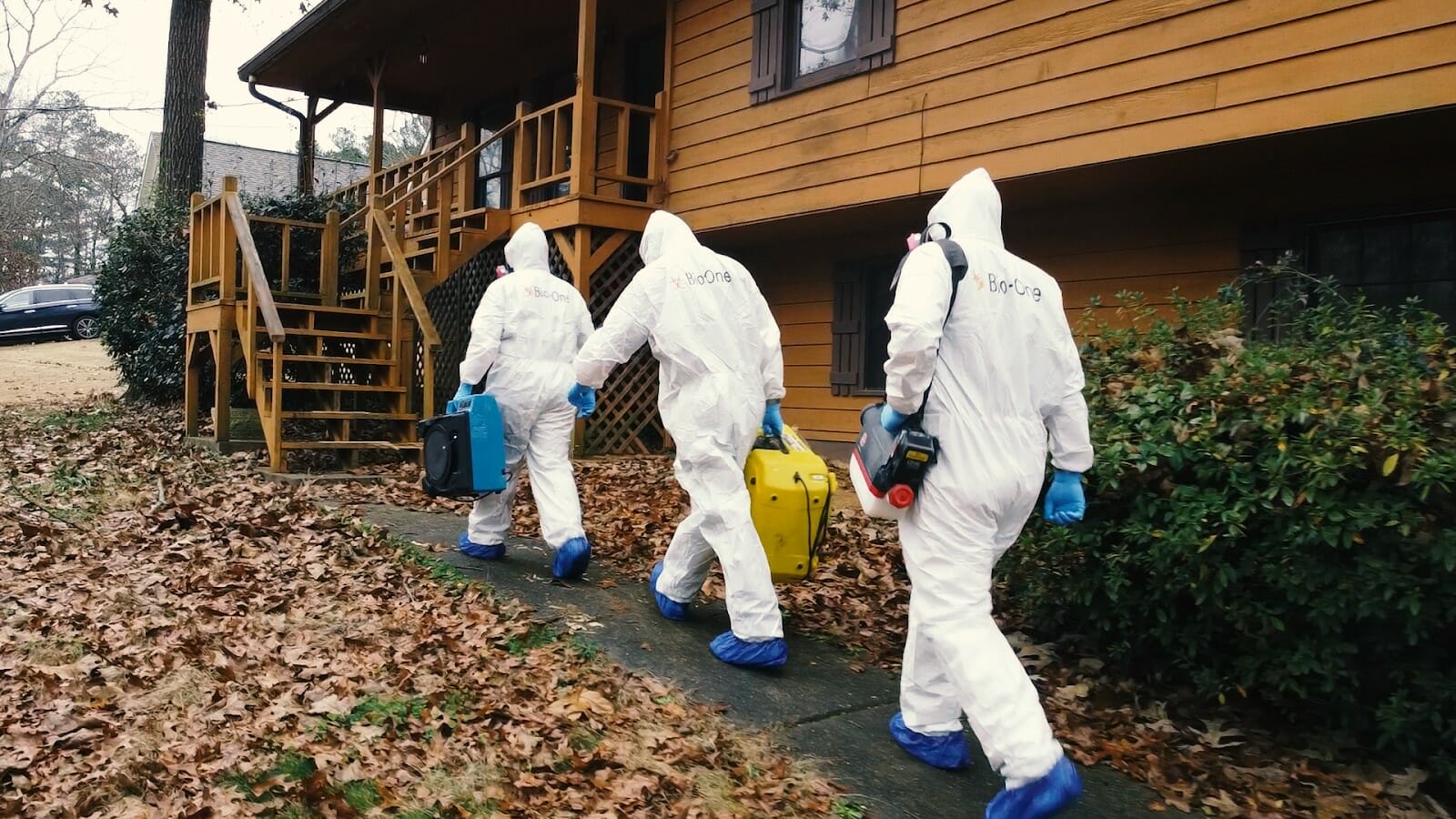
Our team at Bio-One of Pittsburgh can provide the necessary support, including network referrals for therapy, animal care, and legal support, to ensure every individual and animal involved in an animal hoarding case regains a healthy, nurturing environment. If you need help or know someone struggling with an animal hoarding situation, do not hesitate to reach out!
Bio-One of Pittsburgh is always ready to assist you in unexpected situations. Our expert specialists are always ready to assist you in dealing with highly pressurized situations that may be emotionally and physically draining, allowing you to focus on other vital activities while healing in a sanitary environment. Locally owned and operated, we provide the following:
Bio-One works closely with victim support centers nationwide and local authorities, communities, emergency services personnel, hoarding task forces, apartment communities, insurance companies, and other organizations to accomplish each customer's most efficient and superior service possible.
Many crime scene cleanup companies may face unexpected, unfortunate life events. Still, Bio-One is the right choice because of our expertise and profoundly caring and discreet specialists.
We are proud members of the NAPO Pittsburgh - National Association of Productivity & Organizing Professionals!
Bio-One of Pittsburgh serves the following Pennsylvania counties: Allegheny County, Washington County, Beaver County, Butler County, Armstrong County, Westmoreland County, Lawrence County, Greene County, Fayette County, and Mercer County.
We also serve the following cities and surrounding communities: from Allison Park all the way to Creighton, Crescent, Cuddy Curtisville, Millvale, Monroeville, Oakmont, Pitcairn, Pleasant Hills, Plum, Port Vue, Presto, Rankin, Rennerdale, Rural Ridge, Russellton, Sharpsburg, South Park to Springdale, we are ready to help you.

Discovering unwelcome rodents in your home can be more than a nuisance; it can pose serious health risks and create a need for a thorough and careful cleanup. This guide explores the most effective methods for cleaning up after mice and rodents. The sooner you detect a rodent infestation, the better. Mice and rats can be shy and are often detected by signs rather than sightings. Look for:
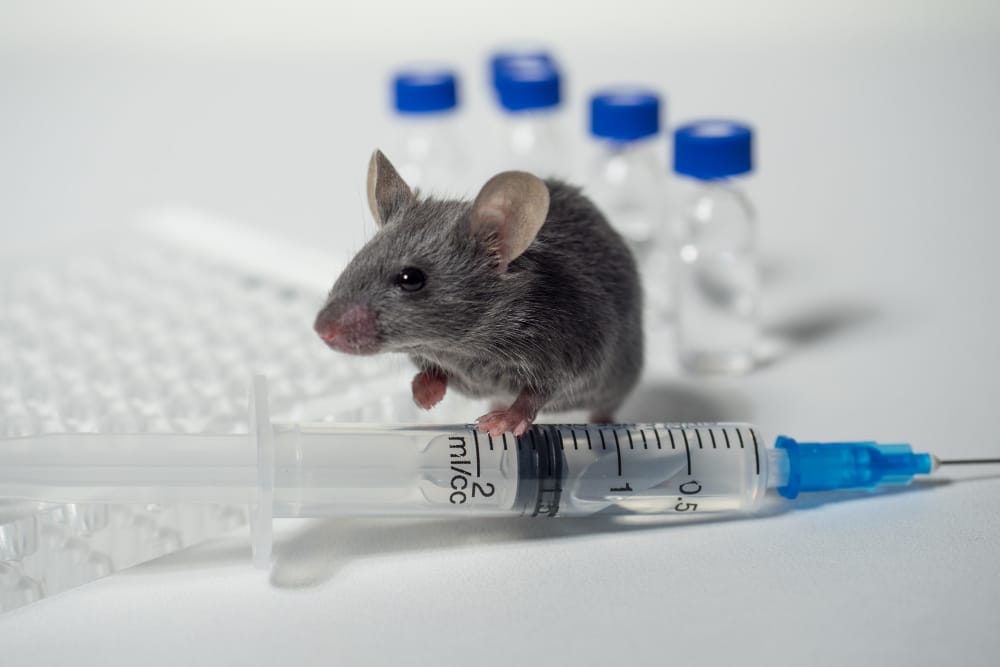
We covered it all in our latest post: Beyond the Nibbles: Common Diseases Spread by Rodents | Bio-One of Pittsburgh
When dealing with rodents, it is crucial to prioritize safety. Always wear protective gear, including:
Disclaimer: In some cases, it may be best to hire professional cleaning services, especially when dealing with large infestations or environments where the safety of the cleanup team cannot be adequately assured.
Ventilation
Before starting, open windows or use fans to create airflow. Vent the area for at least 30 minutes to minimize the spread of airborne particles.
Removal of Droppings and Nests
Wear protective gear and use wet techniques, such as spraying or wiping with a damp cloth, to minimize dust and airborne particles.
Though highly suggested by some cleaning companies, the Centers for Disease Control and Prevention DO NOT recommend vacuuming rodent droppings and waste, as this may lead to an increase in harmful airborne particles.
Disinfection
Once all droppings and nests have been removed, disinfect the area using a bleach solution or commercial EPA-approved disinfectant. Be sure to follow the instructions on the product label and allow for proper ventilation during and after application.
Storage and Disposal of Contaminated Materials
Once all contaminated materials have been removed and disinfected, place them in sealable plastic bags or containers for proper disposal. These should be labeled as hazardous waste and disposed of according to local regulations.
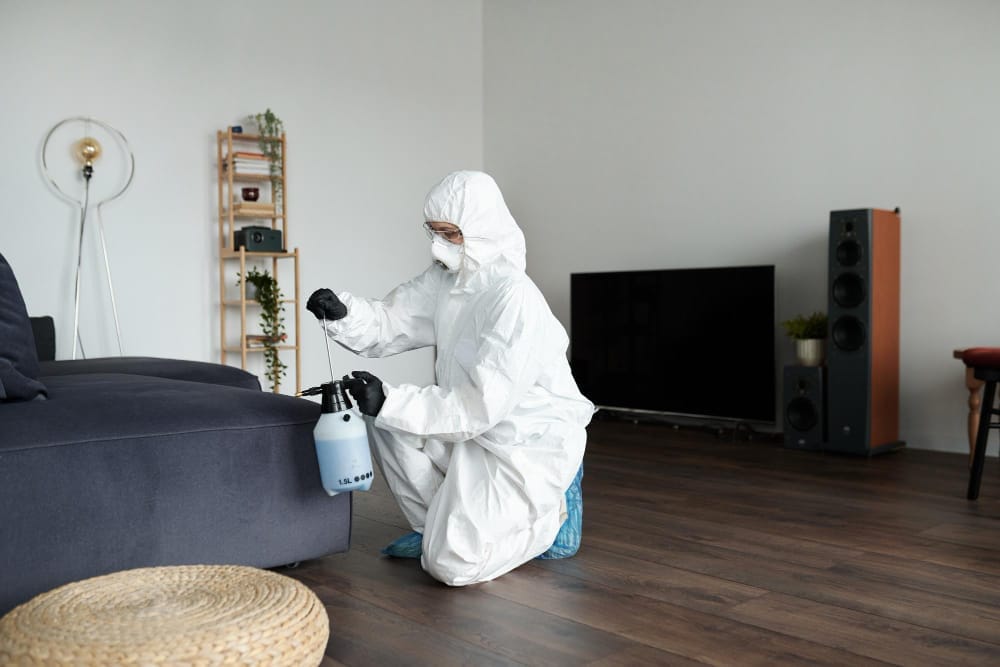
After cleaning up after mice, it's important to take preventative measures to avoid future infestations. This includes sealing any cracks or holes in the walls or foundation of your home, storing food in airtight containers, and regularly cleaning up crumbs and spills.
Learn more about expert tips for cleaning up after mice by visiting: Cleaning Up After Rodents: The Most Important Areas to Tackle | Bio-One of South OC
By following these comprehensive approaches, you can ensure your home is thoroughly clean and safe after experiencing a rodent infestation. Remember, above all, take every precaution to safeguard your health when undertaking any cleanup process. It's always best to consult a professional cleaning company like Bio-One of Pittsburgh for expert assistance in dealing with rodent infestations.
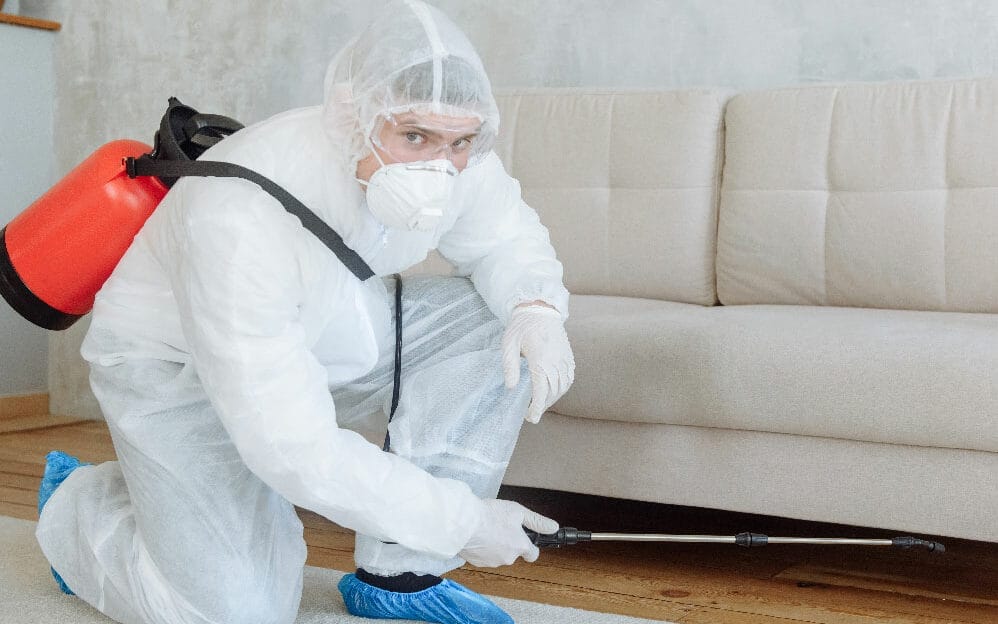
Bio-One of Pittsburgh is always ready to assist you in unexpected situations. Our expert specialists are always ready to assist you in dealing with highly pressurized situations that may be emotionally and physically draining, allowing you to focus on other vital activities while healing in a sanitary environment. Locally owned and operated, we provide the following:
Bio-One works closely with victim support centers nationwide and local authorities, communities, emergency services personnel, hoarding task forces, apartment communities, insurance companies, and other organizations to accomplish each customer's most efficient and superior service possible.
Many crime scene cleanup companies may face unexpected, unfortunate life events. Still, Bio-One is the right choice because of our expertise and profoundly caring and discreet specialists.
We are proud members of the NAPO Pittsburgh - National Association of Productivity & Organizing Professionals!
Bio-One of Pittsburgh serves the following Pennsylvania counties: Allegheny County, Washington County, Beaver County, Butler County, Armstrong County, Westmoreland County, Lawrence County, Greene County, Fayette County, and Mercer County.
We also serve the following cities and surrounding communities: from Allison Park all the way to Creighton, Crescent, Cuddy Curtisville, Millvale, Monroeville, Oakmont, Pitcairn, Pleasant Hills, Plum, Port Vue, Presto, Rankin, Rennerdale, Rural Ridge, Russellton, Sharpsburg, South Park to Springdale, we are ready to help you.

To begin a deep exploration into the realms of hoarding and collecting is to steer into what is, for many, uncharted territory – one that's as intriguing as it is complex. The subjects of hoarding and collecting often intertwine, yet they carry vastly different connotations and implications. In this post, we'll unpack the nuances of these behaviors, understand the attraction, and shed light on the potential dangers – all while offering a glimpse into the sensitive and seldom-discussed aspects of Hoarding Disorder.
At its core, collecting is an inherently human practice. Since ancient times, people have gathered objects they find beautiful, interesting, or valuable. The psychology of collecting can be as diverse as the collections themselves. Some collect to fill emotional gaps, seeking the rush of acquiring a new item to combat feelings of loneliness or inadequacy. Others collect as a form of investment or a means of expressing their tastes and identities. Whatever the reason, the act of collecting offers a connection to history, a marker of identity, and a sense of control over one’s surroundings.
The allure of collecting spans several psychological motivations. For some, it’s the thrill of the hunt, the anticipation leading up to acquiring a coveted item. The completion of a collection can bring immense satisfaction, a sense of accomplishment and control, and even validation. Each item serves as a physical reminder of the collector’s interests and aesthetic preferences, acting as an anchor for their memories and experiences.
Collecting can be an inherently social behavior, creating communities around shared interests. The internet has particularly amplified this social aspect, allowing collectors to connect globally, share advice, and display their collections online. In doing so, collectors can find a sense of belonging and recognition within their respective communities. Their collections, then, become a means of articulating their individuality and values, sometimes even functioning as a source of pride and personal legacy.

Where collecting can be an organized, purposeful pursuit, hoarding is often characterized by the accumulation of possessions to the point where living spaces become unusable. Among the many dangers of hoarding is the very real risk to one’s health and home safety. The inability to discard items can lead to fire hazards, health code violations, and unsanitary conditions.
The mass of items that hoarders accumulate often leads to homes filled beyond capacity, creating pathways through the space at best and blocked exits at worst. These conditions can result in trips and falls, respiratory problems due to dust and mold, and even more devastating consequences in the case of an emergency where rapid evacuation is necessary.
Hoarding can have profound impacts on the mental well-being of those who suffer from it, as well as on their family members who may struggle to understand and cope with the behavior. The feeling of distress when trying to discard items, anxiety about the loss of potential value or the usefulness of objects, and the growing isolation from social consequences can all contribute to a downward spiral in mental health.
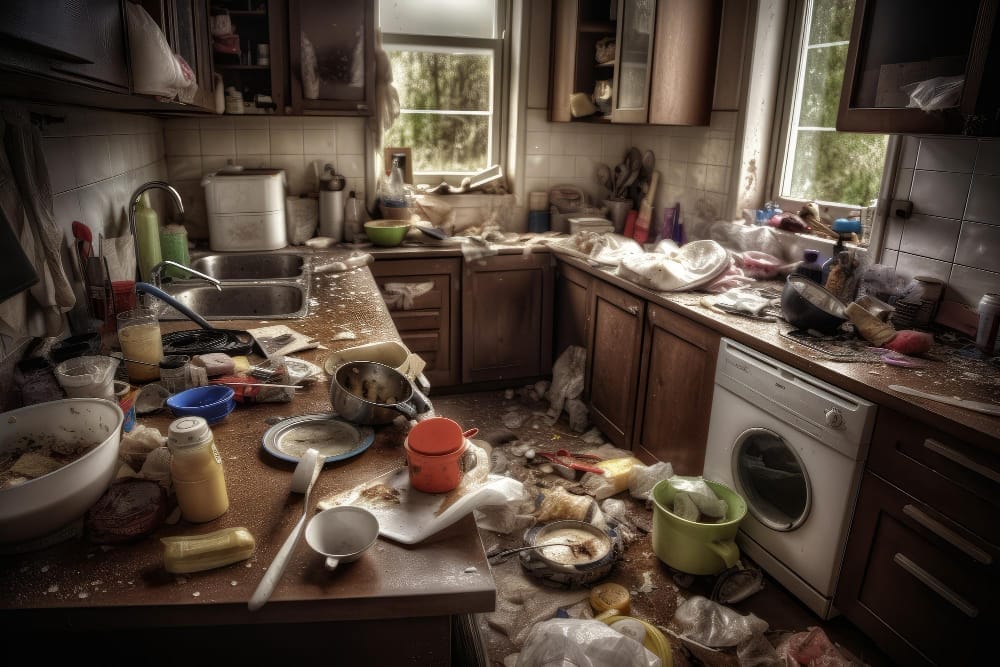
Learn more: Hoarding and Health - How Much has Hoarding Affected You? | Bio-One of Poway
The line between collecting and hoarding is not always clear-cut. For many enthusiasts, their vast arrays of items are meticulously organized and well-cared for. However, it's important to recognize that there is a spectrum of behavior, and what begins as seemingly benign collecting can, in some cases, develop into a Hoarding Disorder.
Learn more: Are Hoarding and Collecting Different? | Bio-One of Chula Vista
Whether you are the one who hoards or feels the weight of the situation as a family member or friend of a hoarder, it's important to acknowledge these feelings and seek support. Addressing hoarding behavior often requires a multifaceted approach, which may include therapy, support groups, and professional cleanup services.
One of the main concerns with hoarding is that people fail to realize they have a problem! The world of collecting and hoarding is complex, but not without hope. By understanding the allure of collecting and the dangers of hoarding, we can approach these behaviors with empathy and the necessary tools to seek help or support loved ones.
Bio-One of Pittsburgh provides discreet hoarding cleanup services to help restore a safe and healthy living environment. Don't let hoarding take over your life or the life of someone you care about. Reach out for help and start taking steps towards a happier and healthier future. Thank you for reading, and remember, you are not alone in this journey!
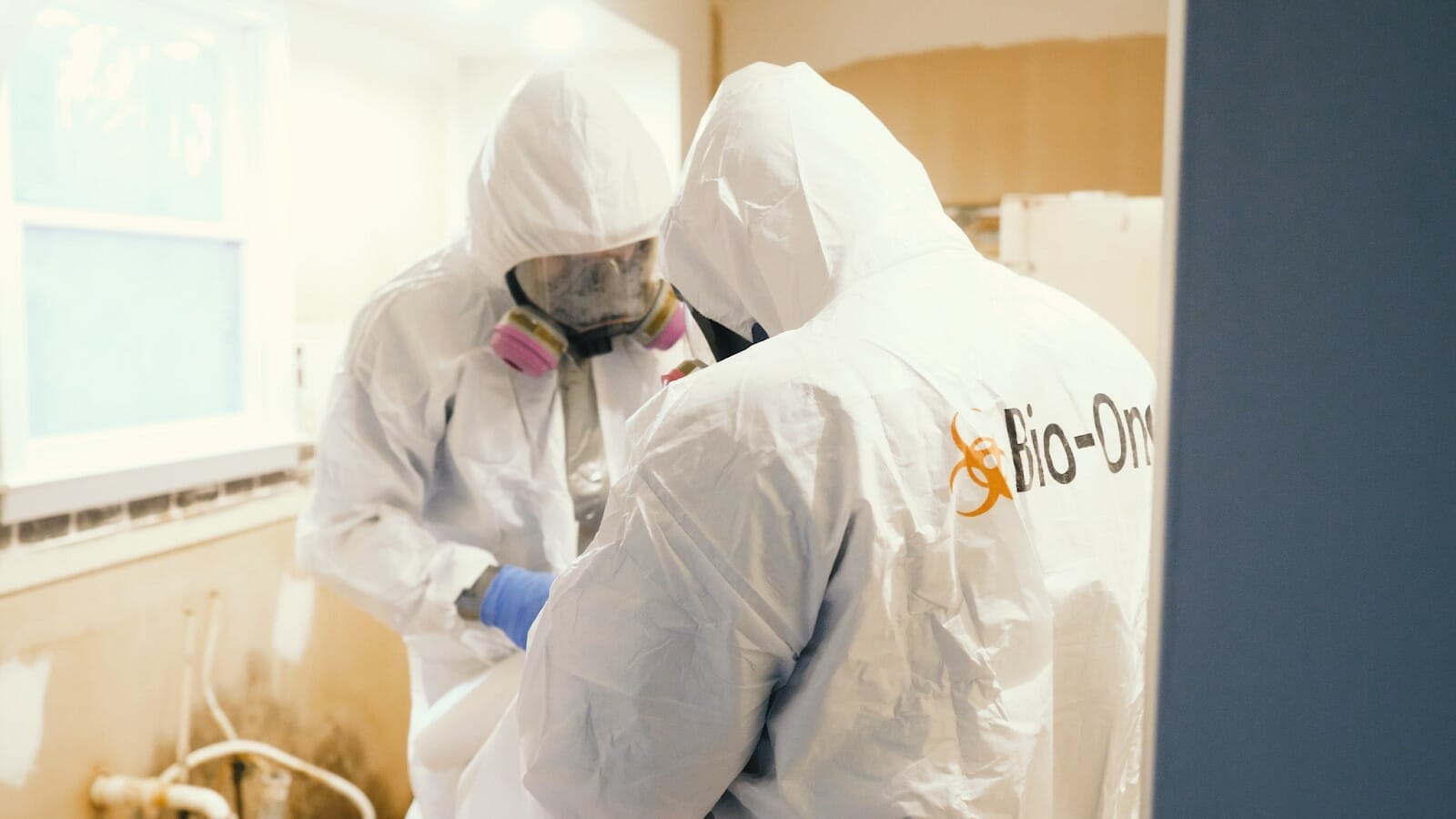
Bio-One of Pittsburgh is always ready to assist you in unexpected situations. Our expert specialists are always ready to assist you in dealing with highly pressurized situations that may be emotionally and physically draining, allowing you to focus on other vital activities while healing in a sanitary environment. Locally owned and operated, we provide the following:
Bio-One works closely with victim support centers nationwide and local authorities, communities, emergency services personnel, hoarding task forces, apartment communities, insurance companies, and other organizations to accomplish each customer's most efficient and superior service possible.
Many crime scene cleanup companies may face unexpected, unfortunate life events. Still, Bio-One is the right choice because of our expertise and profoundly caring and discreet specialists.
We are proud members of the NAPO Pittsburgh - National Association of Productivity & Organizing Professionals!
Bio-One of Pittsburgh serves the following Pennsylvania counties: Allegheny County, Washington County, Beaver County, Butler County, Armstrong County, Westmoreland County, Lawrence County, Greene County, Fayette County, and Mercer County.
We also serve the following cities and surrounding communities: from Allison Park all the way to Creighton, Crescent, Cuddy Curtisville, Millvale, Monroeville, Oakmont, Pitcairn, Pleasant Hills, Plum, Port Vue, Presto, Rankin, Rennerdale, Rural Ridge, Russellton, Sharpsburg, South Park to Springdale, we are ready to help you.

Few occurrences are as chilling to a homeowner as the skittering sound of a mouse or the flicker of movement in the corner of the eye that signifies a potential rodent infestation. However, the threat of a pest is not merely the inconvenience of food being nibbled or nests being made in the attic; more insidious dangers lurk. Take a look at the pervasive but often underestimated health risks that come hand-in-hand with diseases spread by rodents.
Rodents may be small, but they carry hefty dangers. Here's a closer look at the diseases that can be spread:
Originating in North America, Hantavirus Pulmonary Syndrome (HPS) is a rare but severe and potentially fatal respiratory disease. It is spread through contact with the secretions of infected rodents, particularly droppings, and urine, or by inhaling dust contaminated with rodent urine or droppings. Early symptoms include fever, chills, muscle aches, and coughing, and can quickly progress to severe difficulty in breathing. The species that carry Hantavirus vary by region and include deer mice, cotton rats, and rice rats.
Learn more: Hantavirus Pulmonary Syndrome (HPS) | CDC

Leptospirosis is a bacterial disease caused by bacteria of the genus Leptospira. Humans can become infected through contact with water, soil, or food contaminated by the urine of infected animals. In the case of rodents, direct contact or through contact with their urine presents a risk. This disease can range from mild and asymptomatic to severe with kidney or liver failure. Early symptoms mimic those of the flu, making it harder to diagnose and leading to increased risk if untreated.
Learn more: Leptospirosis | CDC
Perhaps unsurprisingly, the name of this disease is quite revealing. Rat-bite fever can be contracted through bites or scratches from rodents such as rats, as well as through contact with their droppings or urine. Symptoms include fever, vomiting, headaches, and body aches, and it can be particularly dangerous for pregnant women or people with weakened immune systems.
Learn more: Signs and Symptoms of Rat-bite Fever | CDC

Salmonellosis, caused by the bacteria Salmonella, can lead to salmonella infection in humans. The bacteria are typically spread through contaminated food, but rodent infestations can lead to the spread within the home environment. Symptoms include diarrhea, fever, and abdominal cramps, and while most people recover without treatment, severe complications can occur.
Learn more: Questions and Answers | Salmonella | CDC
The first step in protecting yourself from the diseases spread by rodents is recognizing their presence in your home. Here are some common red flags to watch for:
Proper identification of a potential problem can drastically improve the chances of early eradication, preventing the spread of rodent-related diseases.
When faced with a rodent infestation, you should prioritize both the removal of the pests and the remediation of any potential health hazards they've left behind. Bio-One of Pittsburgh can assist with this critical process. Our teams are experts in cleaning up rodent droppings and urine.
By taking a proactive approach to maintaining a pest-free home, you're investing in the health and safety of your family and loved ones. Remember, even the smallest of rodents can carry the gravest of risks—don't take them for granted. Give us a call for a free consultation in the Western Pennsylvania area!
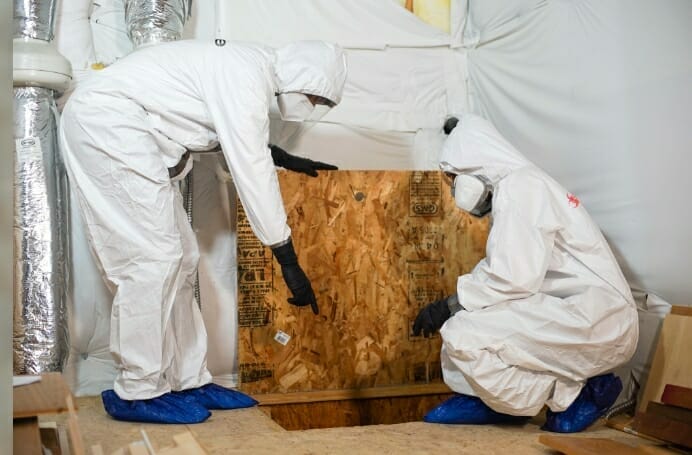
Bio-One of Pittsburgh is always ready to assist you in unexpected situations. Our expert specialists are always ready to assist you in dealing with highly pressurized situations that may be emotionally and physically draining, allowing you to focus on other vital activities while healing in a sanitary environment. Locally owned and operated, we provide the following:
Bio-One works closely with victim support centers nationwide and local authorities, communities, emergency services personnel, hoarding task forces, apartment communities, insurance companies, and other organizations to accomplish each customer's most efficient and superior service possible.
Many crime scene cleanup companies may face unexpected, unfortunate life events. Still, Bio-One is the right choice because of our expertise and profoundly caring and discreet specialists.
We are proud members of the NAPO Pittsburgh - National Association of Productivity & Organizing Professionals!
Bio-One of Pittsburgh serves the following Pennsylvania counties: Allegheny County, Washington County, Beaver County, Butler County, Armstrong County, Westmoreland County, Lawrence County, Greene County, Fayette County, and Mercer County.
We also serve the following cities and surrounding communities: from Allison Park all the way to Creighton, Crescent, Cuddy Curtisville, Millvale, Monroeville, Oakmont, Pitcairn, Pleasant Hills, Plum, Port Vue, Presto, Rankin, Rennerdale, Rural Ridge, Russellton, Sharpsburg, South Park to Springdale, we are ready to help you.

Living with a Hoarding Disorder can be incredibly isolating, not only for the individual engulfed in the tangled web of possessions but also for their families and loved ones. The pile-up of items can create a dangerous living environment and a seemingly inescapable mental fortress for those struggling with hoarding tendencies. Despite the daunting reputation that hoarding disorders carry, there is indeed hope on the horizon. A question that often burns in the hearts of those affected is: Can a hoarder be cured?
In our latest blog, we unpack the realities, treatment approaches, and future visions of a world where hoarding no longer holds its victims captive.
Before we look at the prospects of a cure, it's essential to grasp the intricacies of hoarding. A hoarder experiences great difficulty discarding or parting with possessions, regardless of their perceived value. Cluttered houses, hoarding of items commonly seen as trash, and significant distress or impairment in functioning are also key indicators.
Those living with hoarding face an uphill battle against their own cognition and the environmental circumstances that their disorder fosters. The overwhelming presence of items often acts as a source of comfort or security, which makes the notion of discarding them intolerable to the hoarder.

Hoarders often encounter a unique set of psychological hurdles in their day-to-day lives. These can range from the dual challenge of facing the tangible act of discarding an item to the intricate web of thoughts and emotions that bind hoarding as a coping mechanism.
Cognitive-behavioral therapy (CBT), for instance, targets the distorted beliefs that lead to hoarding, while practitioners of Exposure and Response Prevention (ERP) guide patients through a gradual process of exposure to the anxiety-provoking situation of discarding items. Medication, particularly selective serotonin reuptake inhibitors (SSRI), also plays a significant role in aiding the reduction of compulsive hoarding behaviors.
Support groups such as the popular Clutterers Anonymous provide a safe space for individuals to share their experiences and learn coping strategies from peers. Community resources, including professional organizing services and local government assistance, can be invaluable tools for hoarders looking to take control of their living spaces.
For the families of hoarders, the effect can be as emotionally taxing as it is perplexing. Balancing the desire to help with the need to respect the hoarder's autonomy is a challenging task. Families are often encouraged to seek psychoeducation on hoarding and acquire practical skills to support their loved one effectively.
Creating a supportive, non-judgmental environment can encourage a hoarder to seek treatment. The implementation of family-based interventions, which include family members in treatment plans, can also be highly effective.

The landscape of hoarding treatment is constantly evolving. Recent advances in the understanding of this disorder have paved the way for innovative and promising interventions.
The development of more targeted medications and gene therapies holds the potential for tailoring treatments to individual patients, optimizing therapeutic outcomes. Researchers are tackling the roots of hoarding through the lens of neurobiology to further uncover the neural mechanisms at play, which may yield breakthrough treatments in the coming years.

Hoarder homes can pose serious health and safety risks due to the accumulation of items and the potential for infestations and structural damage. Bio-One of Pittsburgh steps in to provide professional cleaning services for homes affected by hoarding. By meticulously restoring the home's condition, Bio-One not only addresses the physical aspects of hoarding but also offers a glimpse of a future where a clean, safe, and serene home is attainable!
Bio-One of Pittsburgh is always ready to assist you in unexpected situations. Our expert specialists are always ready to assist you in dealing with highly pressurized situations that may be emotionally and physically draining, allowing you to focus on other vital activities while healing in a sanitary environment. Locally owned and operated, we provide the following:
Bio-One works closely with victim support centers nationwide and local authorities, communities, emergency services personnel, hoarding task forces, apartment communities, insurance companies, and other organizations to accomplish each customer's most efficient and superior service possible.
Many crime scene cleanup companies may face unexpected, unfortunate life events. Still, Bio-One is the right choice because of our expertise and profoundly caring and discreet specialists.
We are proud members of the NAPO Pittsburgh - National Association of Productivity & Organizing Professionals!
Bio-One of Pittsburgh serves the following Pennsylvania counties: Allegheny County, Washington County, Beaver County, Butler County, Armstrong County, Westmoreland County, Lawrence County, Greene County, Fayette County, and Mercer County.
We also serve the following cities and surrounding communities: from Allison Park all the way to Creighton, Crescent, Cuddy Curtisville, Millvale, Monroeville, Oakmont, Pitcairn, Pleasant Hills, Plum, Port Vue, Presto, Rankin, Rennerdale, Rural Ridge, Russellton, Sharpsburg, South Park to Springdale, we are ready to help you.

If you've ever been in a room with the lingering scent of urine, you know how unpleasant it can be. Unattended urine odor can not only make a space unpleasant but also dangerous. That's why it's important to hire professionals to get rid of urine smell, or animal and human waste from any setting.
With that being said, there are several ways homeowners and property managers can tackle the remediation of urine-contaminated areas prior to professional help arriving onsite. In this blog post, we'll share five tips for helping eliminate the smell of urine from your home or business!
Urine smell can be both unpleasant and concerning, especially when there is uncertainty about its source. Identifying the source of the odor is essential for proper and effective cleanup. Whether it is human or animal, assessing the level of danger is required. This task requires a keen sense of smell and knowledge of animal and human anatomy and behavior!
Using a strong cleaning solution is essential to remove urine particles, which can harbor harmful bacteria. It is important to clean not only the surface area but also any surrounding objects and materials that may have been affected.
After cleaning, it is important to disinfect the area. This will help prevent any residual bacteria or germs from spreading and causing further issues.
Disinfectants may come in the form of sprays, wipes, or even powders that can be used for targeted areas. Make sure to follow all instructions on the product's label carefully to ensure that it is used safely and effectively! Once the disinfectant has been applied, allow it to air dry before allowing any contact with humans or animals.
Traditional cleaning products simply won't help you get rid of the urine smell. Enzyme-based odor neutralizers can come in handy in these situations! These specialized products target the enzymes in urine that cause odor, breaking them down and neutralizing the smell. Not only are they highly effective, but they're also safe for use on a variety of surfaces, from carpets and upholstery to tile and grout.
When choosing an enzyme-based odor neutralizer, be sure to select one that is specifically designed for urine odors. This will ensure maximum effectiveness and a fresh, clean scent throughout your home or business.
Seal off the affected rooms or areas with plastic sheeting and ensure proper ventilation not only helps to contain the odor but also speeds up the process of getting rid of it. By doing this, you prevent the odors from spreading and causing further damage while allowing fresh air to circulate, ultimately leading to a more comfortable and healthier environment.
It's always wise to seek professional help if you're unsure of how to handle the situation, as they can provide additional guidance and recommendations!
When dealing with hazardous waste such as human and animal feces, it is crucial to ensure safe and complete remediation. That's where a professional biohazard remediation team comes in. With their expertise and specialized equipment, they can effectively clean up waste and eliminate any potential health risks.
It's not worth putting yourself or others in danger by attempting to handle the situation on your own. Trusting the professionals guarantees that the hazardous waste will be properly disposed of and the affected area will be thoroughly cleaned, leaving no trace of the biohazard behind. Don't hesitate to contact a professional biohazard remediation team for a clean and safe solution!
Dealing with unpleasant urine odors can be a challenge for any homeowner. Proper and complete remediation is essential to ensuring a safe and disinfectd environment free of hazardous waste. Following the steps outlined above are important first steps in removing the smell of urine and getting rid of unpleasant odors.
However, if human or animal feces is the source, it is important to contact an expert biohazard remediation team like Bio-One of Pittsburgh to reduce health risks and potential exposure to hazardous substances. Taking the time to understand what type of odor one is dealing with and following proper protocol will help ensure a pleasant and healthy environment for everyone!

Bio-One of Pittsburgh is always ready to assist you in unexpected situations. Our expert specialists are always ready to assist you in dealing with highly pressurized situations that may be emotionally and physically draining, allowing you to focus on other vital activities while healing in a sanitary environment. Locally owned and operated, we provide the following:
Bio-One works closely with victim support centers nationwide and local authorities, communities, emergency services personnel, hoarding task forces, apartment communities, insurance companies, and other organizations to accomplish each customer's most efficient and superior service possible.
Many crime scene cleanup companies may face unexpected, unfortunate life events. Still, Bio-One is the right choice because of our expertise and profoundly caring and discreet specialists.
Bio-One of Pittsburgh serves the following Pennsylvania counties: Allegheny County, Washington County, Beaver County, Butler County, Armstrong County, Westmoreland County, Lawrence County, Greene County, Fayette County, and Mercer County.
We also serve the following cities and surrounding communities: from Allison Park all the way to Creighton, Crescent, Cuddy Curtisville, Millvale, Monroeville, Oakmont, Pitcairn, Pleasant Hills, Plum, Port Vue, Presto, Rankin, Rennerdale, Rural Ridge, Russellton, Sharpsburg, South Park to Springdale, we are ready to help you.

Are you struggling with keeping your home clean and tidy due to hoarding? Do you feel like you're constantly cleaning, but nothing ever changes? Know this: you are not alone. According to the National Institute of Mental Health, hoarding is a complex problem that affects an estimated 2-6% of the population. And while there's no easy fix, professional help from a company like Bio-One can make all the difference. Keep reading to learn more about our comprehensive approach to cleaning hoarding.
Cleaning and decluttering your home is essential to a successful cleaning regimen. As daunting as the prospect may seem, the first step to cleaning out your space can be done with relative ease. Before you start cleaning hoarding, focus on gathering all the trash in your living environment, eliminating any unnecessary clutter that could prevent you from cleaning effectively.
You can start by throwing away old newspapers, empty fast food containers, and anything else you don’t need or want. Check all hidden spots where hoarding might occur, such as closets and cabinets, and take out items that don't belong there. Cleaning out this trash will help make cleaning other parts of your home much easier!
Once hoarding cleanup is done and all the trash is cleared out, it's time to tackle the dirt and grime that has built up over time. Scrubbing floors, dusting surfaces with a damp cloth, and vacuuming carpets are all effective ways to remove any dirt that might have accumulated amongst previously hoarded items. When everything shines brighter than before, you can rest easy knowing that your hoarding cleanup job was successful!
Clutter can make any space look disorganized and uninviting. Taking the time to declutter can help you reclaim your space and make cleaning much easier. Start by going through the items in your living area, removing anything that hasn't been used or worn in a while, such as clothes, books, furniture, and knick-knacks. It's important to remember that cleaning is not hoarding - if something isn't useful for you anymore, it's best to let it go. You'll soon find that with a bit of effort, your home will feel lighter and more organized than before.
Now that you've cleared out the clutter, it's time to make the space work for you. You can organize it in a way that makes sense for your space and needs. Think about what kind of storage solutions make the most sense - maybe installing some shelving or creating designated spots for things like keys and bills – and then get creative! You can turn an unused room into an organized, productive area with little effort.
A clean home is important for both your physical and mental health, so getting rid of any clutter or dirt that might be around is essential. However, decluttering and cleaning can be difficult, especially if you're living in a space that's been hoarded for a long time. That's where our team comes in! Our Pittsburgh hoarding cleaning technicians are highly-skilled professionals with unmatched compassion, discretion, and experience for the most challenging hoarding cleaning jobs.
If you're feeling overwhelmed by the thought of decluttering your home, give us a call. We'll be happy to help you start creating a healthy living space..

Bio-One of Pittsburgh is always ready to assist you in unexpected situations. Our expert specialists are always ready to assist you in dealing with highly pressurized situations that may be emotionally and physically draining, allowing you to focus on other vital activities while healing in a sanitary environment. Locally owned and operated, we provide the following:
Bio-One works closely with victim support centers nationwide and local authorities, communities, emergency services personnel, hoarding task forces, apartment communities, insurance companies, and other organizations to accomplish each customer's most efficient and superior service possible.
Many crime scene cleanup companies may face unexpected, unfortunate life events. Still, Bio-One is the right choice because of our expertise and profoundly caring and discreet specialists.
We are proud members of the NAPO Pittsburgh - National Association of Productivity & Organizing Professionals!
Bio-One of Pittsburgh serves the following Pennsylvania counties: Allegheny County, Washington County, Beaver County, Butler County, Armstrong County, Westmoreland County, Lawrence County, Greene County, Fayette County, and Mercer County.
We also serve the following cities and surrounding communities: from Allison Park all the way to Creighton, Crescent, Cuddy Curtisville, Millvale, Monroeville, Oakmont, Pitcairn, Pleasant Hills, Plum, Port Vue, Presto, Rankin, Rennerdale, Rural Ridge, Russellton, Sharpsburg, South Park to Springdale, we are ready to help you.

Fentanyl is a potent and dangerous drug that is responsible for numerous overdose deaths. The drug is highly addictive, and even small doses can be lethal. Its potency makes it dangerous, not just for drug users but also for emergency responders and anyone exposed to the drug unintentionally. As a result, we must understand the risks associated with fentanyl exposure and the preventive measures they must take to stay safe.
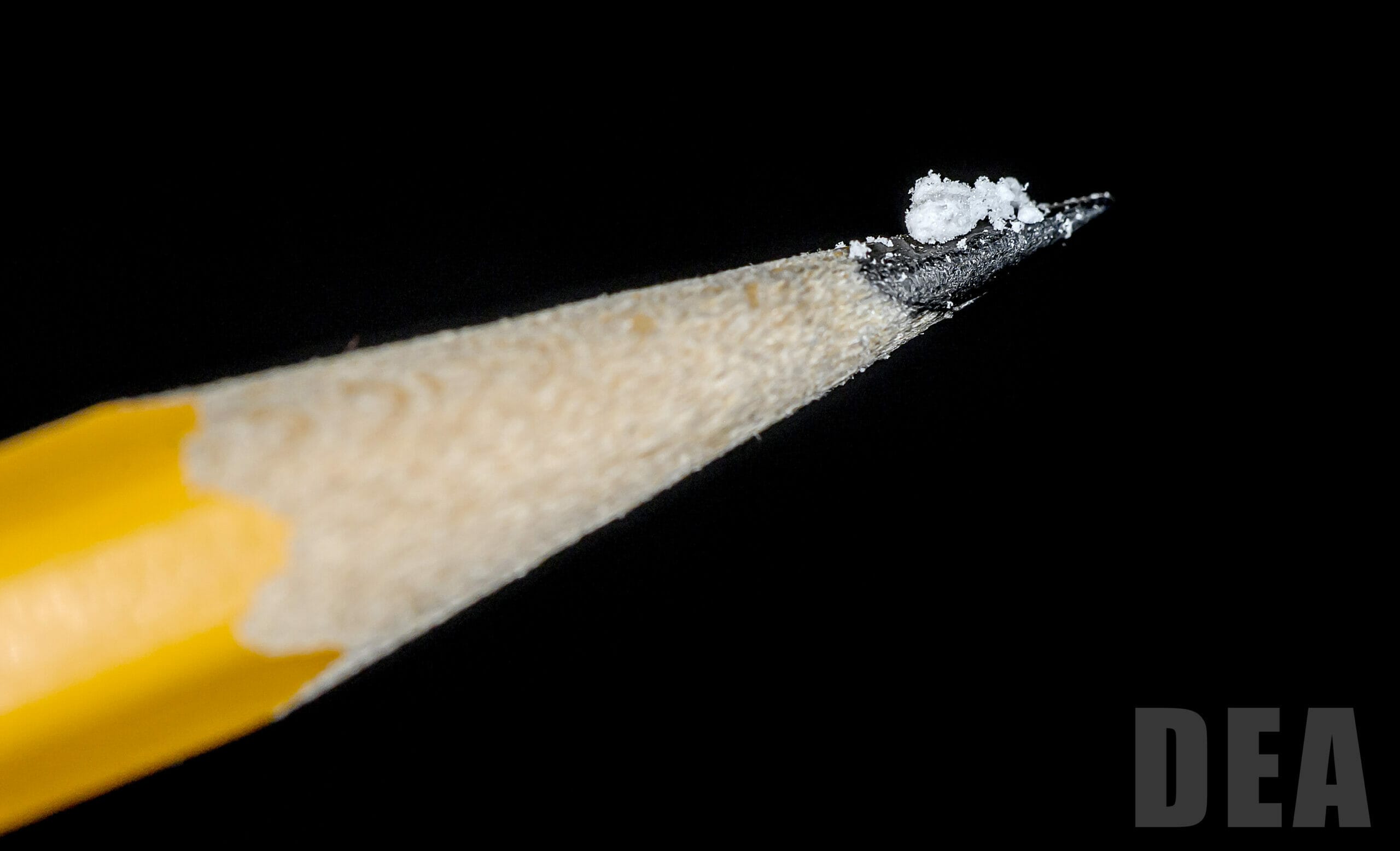
Fentanyl is a synthetic opioid that is 50-100 times more potent than morphine. It is a prescription medication typically used to treat severe pain, but it is also produced illegally and sold on the streets. Illegally, fentanyl can be found in:
The production of fentanyl involves mixing various chemicals, often with no medical background or safety regulations, which makes the drug highly unpredictable and dangerous.
Fentanyl exposure can occur through various means, including ingestion, inhalation, and skin contact. It is a highly potent drug, and even small amounts can lead to overdose and death. The risks of fentanyl exposure include:
If you suspect that you or someone you know has been exposed to fentanyl, you must act quickly to prevent an overdose. The first step is to move the person to fresh air immediately. Next, call 911 and take other measures to ensure that emergency help is on the way.
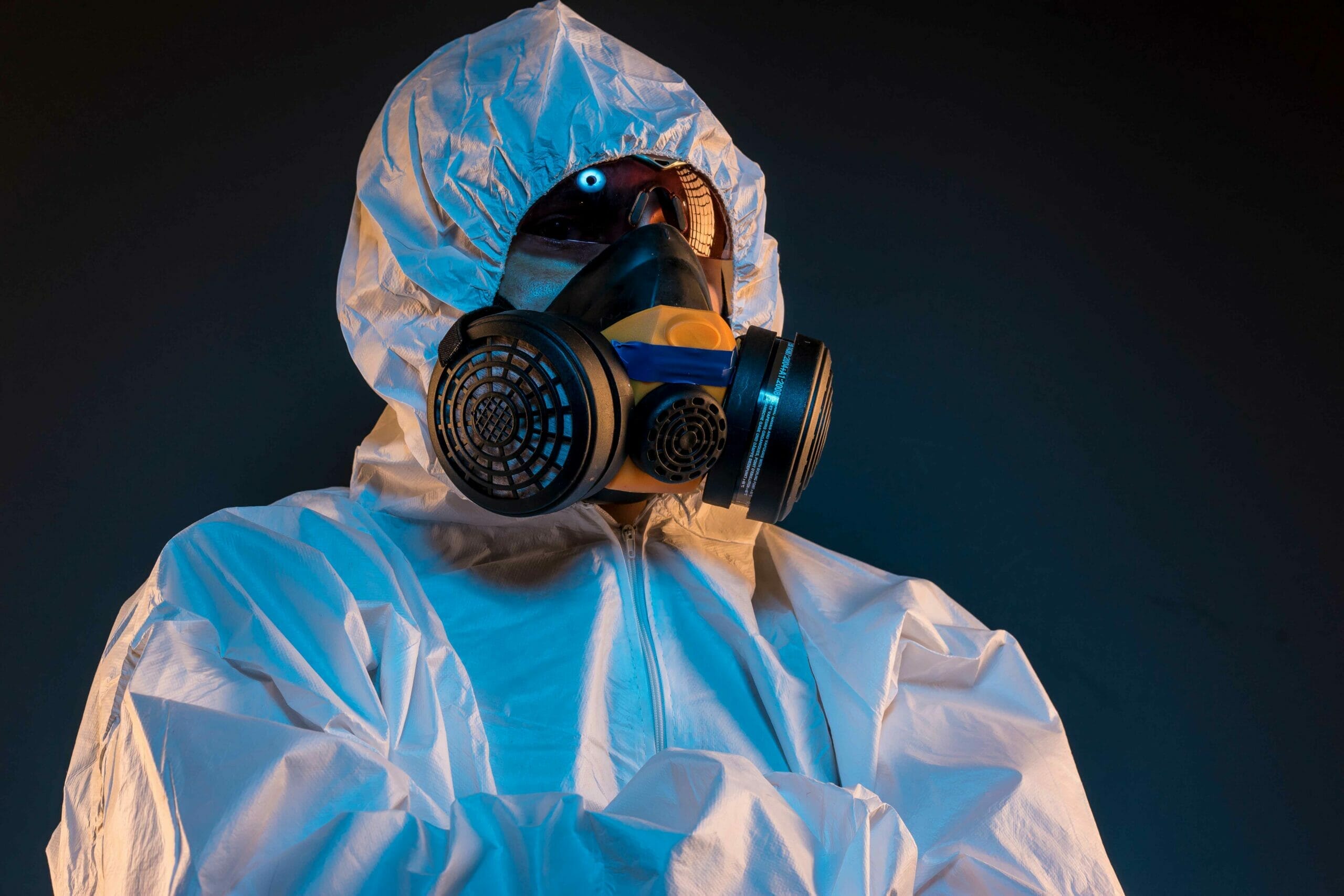
Emergency responders can provide a life-saving medication called Naloxone, which can reverse the effects of fentanyl and other opioids. It is crucial to seek medical attention as soon as possible, even if the person appears to have recovered from an overdose. Fentanyl can remain in the body for a long time, and delayed symptoms or complications may occur.
If you work in environments where fentanyl is present, it's essential to wear personal protective equipment that includes gloves, masks, and safety glasses when handling the disposal. If you suspect that a substance contains fentanyl, do not handle it or attempt to identify it on your own. Instead, contact law enforcement or a hazardous materials team for proper handling and disposal.
Fentanyl exposure is a severe public health problem. If you suspect that a property has been contaminated with fentanyl, seek professional help. Our experts at Bio-One of Pittsburgh can remediate homes, businesses, and properties from fentanyl residue and other biohazardous waste. We are available 24/7, 365 days a year to answer your call!
